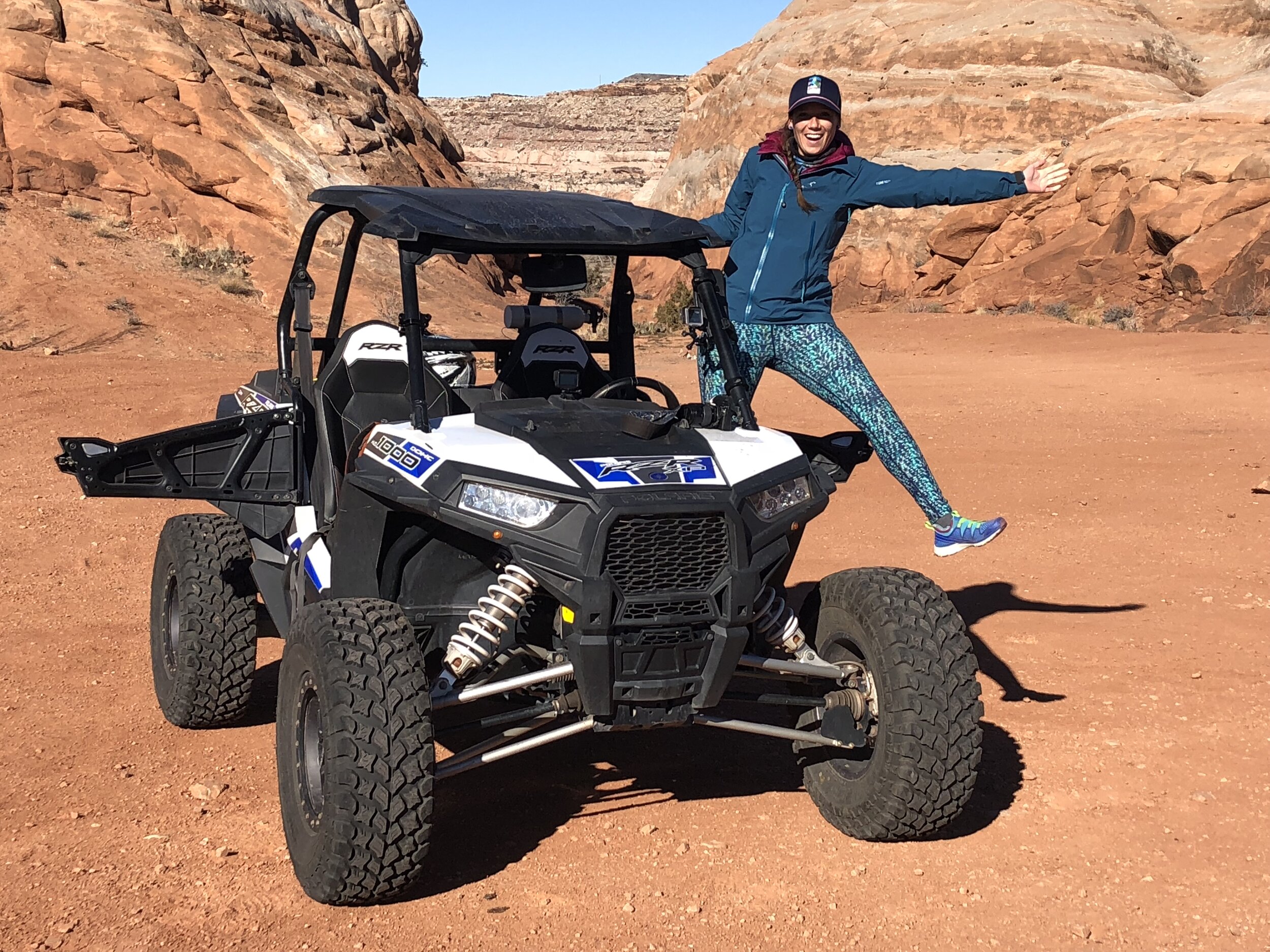An Audience of Women: Reaching Women Globally Should Be at the Forefront of Filmmaking
GenderAvenger is delighted to introduce you to Katherine DuBois, director of the short documentary film Space to Explore, and share with you her thoughts on why reaching women globally should be at the forefront of filmmaking. This piece perfectly aligns with the idea that GenderAvenger, like space, has no boundaries and will continue to advocate for women no matter where they live or work.
When I set out to create Space to Explore, a short documentary profiling aerospace engineer Natalie Panek and her big dream to be the first to set foot on Mars — female representation was at the forefront of my mind. Mid-flight on my way from Calgary to LA, I found myself tearing out a magazine article on Natalie and stuffing it into my pocket. But what had captivated me about the article enough to save it? I could never have imagined the journey that lay ahead or that I would, some four years later, still have that article folded neatly, saved carefully, in my wallet.
As a filmmaker, I had recognized the specialness of the profile on Natalie. She was a woman in a male-dominated field, with, literally, the biggest dreams imaginable — and she was determined to succeed. She wasn’t just a dreamer, she was a scientist, a travel adventurer and explorer, a public speaker, an Instagram inspiration, and much more. I felt inspired, but, more importantly, I felt represented as a dimensional woman. Even given the differences in our careers and goals, Natalie, in that exact moment in my life, was everything that I felt I was and wanted to be. As I began to take the beginning steps to make the film possible, my sights were narrowly set to inspire people like Natalie and myself. I knew that if I did my job right, Space to Explore, would reach others in need of inspiration and representation.
Subconsciously, I had already narrowed my audience of women to North America.
The default language for all content coming out of the United States is English. Large studios like Disney or Universal Studios will focus on large markets all over the world, often subtitling or dubbing films for distribution internationally. Independent production companies without major studio resources may still invest in translation, but anything made and formatted for the silver screen is expensive, far more expensive than uploading a video online. Often, an international effort will not yield a profit without worthwhile theatrical distribution and proper financing for marketing campaigns in each target country. The bottom line is that, traditionally, only the biggest films get international release.
This mindset hasn’t updated in the age of the internet. Its widespread use has enhanced our ability to reach a global audience (with a little legwork), but filmmakers have been slow to recognize that potential. Our obsession with success in Hollywood and New York City narrows and limits our audience. Hyperfocused on acknowledgment and appreciation from our immediate communities, filmmakers forget about offering impactful content to the rest of the world. When it comes to the audience of women, our minds are narrowly set to those that speak English.
When we think about uplifting, celebrating, and growing women’s voices, why wouldn’t we want to include the world?
Space to Explore spent a full twelve months in festivals. At first, I focused on Canada and the United States, but as I searched for festivals with a focus on Women, STEM, Space, and Outdoor Adventure, I quickly realized that festivals all over the world could be interested in the film, and so I expanded my festival circuit to include Australia and New Zealand.
As a filmmaker, I was reminded of this global perspective when reading over transcripts of my interviews with Natalie. A theme was emerging that I hadn’t expected. Space, the pursuit of space, and all the milestones of space exploration and discovery have been global interests and achievements. Natalie was an integral part of these achievements, and she was designing the ExoMars Rover 2020, the next rover to be sent to Mars. This couldn’t be done without participation and advances made in space technology around the world. The ExoMars Rover, alone, was a collaboration between the European Space Agency and the Canadian Space Agency. In my research for this documentary, I read Gene Kranz’s Failure is Not an Option, which details early NASA efforts. Before more modern satellite technology, communication control stations were posted around the world to catch transmissions as a spacecraft passed overhead. This included Australia, Bermuda, Mexico, Nigeria, Zanzibar, and ships sailing the Atlantic, Pacific, and Indian oceans.
It took the world to make the world’s dreams a reality.
If I was going to share Natalie’s accomplishments and her big dream to be the first person — and woman — to set foot on Mars, then it made sense to expand my audience to the rest of the world. After all, the representation of women in film isn’t just for North Americans, Hollywood, and NYC.
Once out of my festival run, it was time to release the film online. It cost only a few hundred dollars to have Space to Explore translated into six popular languages, available with closed-captioning subtitles. I timed the release with World Space Week, which is celebrated in 80+ countries around the world. My first email blast to the national coordinators yielded few results. I realized that even my email may require translation. I did my best to add keywords and phrases in the languages that I had invested in. Saeed Jafari, National Coordinator of Iran, was one of the first to connect with me. He shared his organization’s mission with me, "Empowering the world’s citizens to advance space science and exploration." He brought to my attention the powerful film, Sepideh, about a sixteen-year-old Iranian astronomer with the same big dream Natalie had to be an astronaut. One of her many challenges included that she is not allowed to go out alone at night as a woman. The themes of both my film and Sepideh, reconciling with challenges, dreaming big, and tackling goals, are not specific to a few pockets of the world. Wonderfully enough, Sepideh is available with English captions.
In championing women, we must champion women of the world.
Representation isn’t just about seeing yourself on screen, it’s about the sense of community that those representations can give you. Seeing dynamic women in STEM and space fields can give a sense of community and permission to those who may be isolated or without access, and they can unite this world of women as an empowered force in any industry.
Start out by translating your work and connecting with those internationally. Open your audience to the whole world of women and be a part of the global community.
Here are a few award-winning short films from around the world that focus on women in space.
Space to Explore, 15 minutes, US & Canada
One Small Step, 8 minutes, US & China
Space Girls, 10 minutes, UK
Dreamgazer, 12 minutes, Netherlands
Sepideh, trailer available, Iran
Katherine DuBois is an independent film producer and director. She earned her degree in Drama via Ithaca College, the Eugene O'Neill National Theater Institute, and the St. Petersburg Imperial Arts Academy. Katherine honed her filmmaking skills by writing and producing independent shorts during a decade in Los Angeles and New York City. She wrote, produced, and starred in The Challenge Coin, Back Home, and Awake. Her recent documentary, Space to Explore, profiles aerospace engineer Natalie Panek and her goal to be the first astronaut on Mars. Premiering at Banff Film Festival, the short has won multiple awards in festivals worldwide and is now available on Vimeo. Katherine has exclusively focused on women as the primary subjects of her films.





![Katherine DuBois visited Mundo Verde Bilingual PCS to discuss her film with fifth grade students. Photo credit: teachingforchange [ CC BY-NC 2.0 ], via Flickr .](https://images.squarespace-cdn.com/content/v1/52d48817e4b02a4ced94d551/1574364673934-1F28MB0Z41BJZZTFKD3C/32808100347_2c35bfd88b_k.jpg)
